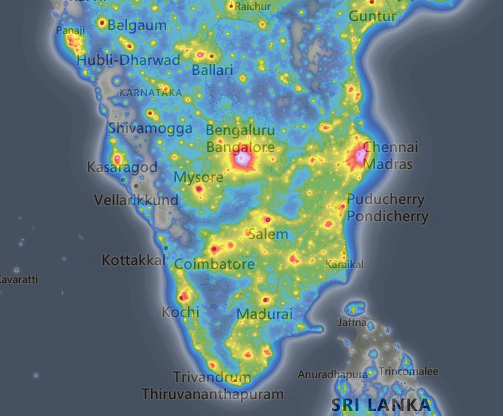New LED fixtures of Chinnaswamay Stadium and LED street lights will increase threat to the natural biodiversity of Bengaluru.
The shift from traditional street lights to LED fixtures is a step forward for sustainable energy but will increase light pollution. Research shows that LED lighting disturbs the day-and-night rhythm of all living beings. It might be the most energy-efficient source but blue-rich cool-white LED lighting is also ecologically unfriendly. Biologists, physicians and ecologists have said that it potentially has negative health effects on individual species and whole ecosystems.
Dr. Krishna MB, an Ornithologist said, “Migration of birds is affected by light pollution as it is synchronized by the day length time and the presence of artificial lights confuses them. They get disoriented and get diverted from their path. Also, absence of light is important for fireflies as they only emit light in darkness and if they don’t do so it disrupts their reproduction.”
He added, “LED’s have higher wavelength, and are much brighter which attracts more insects, confusing it with natural light, affecting their sleep cycle and getting eaten by bats or lizards or getting burnt to death most of the time. Whereas sodium vapour light does not attract much insects due to their low wavelength and yellow color.” Photoperiodism hyperlink of the plants is also affected as length of days gets increased for them.
A study done in 2021, Bengaluru is the third most polluted city in India due to light after Delhi and Hyderabad.

Ms. Priya Chetty, who lives near Cubbon Park said, “Increased lighting of the street lights makes me feel safe but at the same time, when I look at the huge LED screen at Cubbon Park, I feel it’s unnecessary and too bright to be lit in a park at night.”

“Brightness and the blue frequency of LED can damage the human eye. Presence of light at night has also proven deterrent for wildlife movement and affects the sleep cycle of animals,” said Dr. H.S Sudhira, an ecologist at Centre of Ecological Sciences, Indian Institute of Science (IISc), Bengaluru. He also remembered how he loved star gazing when he was a child but gets disheartened now as the night sky is usually unclear.
To reduce light pollution, it is important to keep a check on the angles at which the lights are installed. According to research, the ideal angle is 90 degrees, light dimmers should also be installed, even landscaping of large canopy of trees can help reduce the glare and reflecting light towards the sky.




